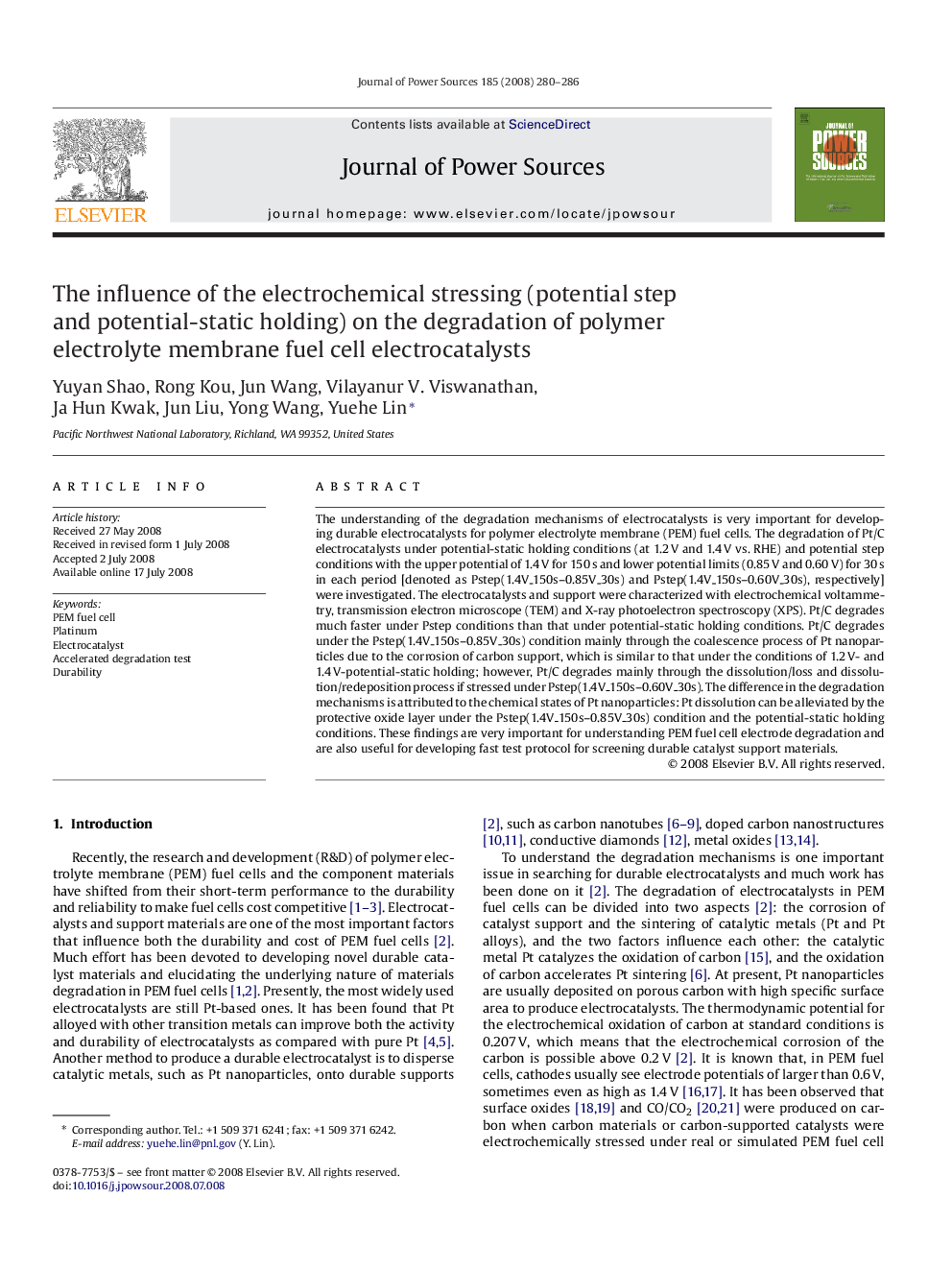| Article ID | Journal | Published Year | Pages | File Type |
|---|---|---|---|---|
| 1294413 | Journal of Power Sources | 2008 | 7 Pages |
The understanding of the degradation mechanisms of electrocatalysts is very important for developing durable electrocatalysts for polymer electrolyte membrane (PEM) fuel cells. The degradation of Pt/C electrocatalysts under potential-static holding conditions (at 1.2 V and 1.4 V vs. RHE) and potential step conditions with the upper potential of 1.4 V for 150 s and lower potential limits (0.85 V and 0.60 V) for 30 s in each period [denoted as Pstep(1.4V_150s–0.85V_30s) and Pstep(1.4V_150s–0.60V_30s), respectively] were investigated. The electrocatalysts and support were characterized with electrochemical voltammetry, transmission electron microscope (TEM) and X-ray photoelectron spectroscopy (XPS). Pt/C degrades much faster under Pstep conditions than that under potential-static holding conditions. Pt/C degrades under the Pstep(1.4V_150s–0.85V_30s) condition mainly through the coalescence process of Pt nanoparticles due to the corrosion of carbon support, which is similar to that under the conditions of 1.2 V- and 1.4 V-potential-static holding; however, Pt/C degrades mainly through the dissolution/loss and dissolution/redeposition process if stressed under Pstep(1.4V_150s–0.60V_30s). The difference in the degradation mechanisms is attributed to the chemical states of Pt nanoparticles: Pt dissolution can be alleviated by the protective oxide layer under the Pstep(1.4V_150s–0.85V_30s) condition and the potential-static holding conditions. These findings are very important for understanding PEM fuel cell electrode degradation and are also useful for developing fast test protocol for screening durable catalyst support materials.
